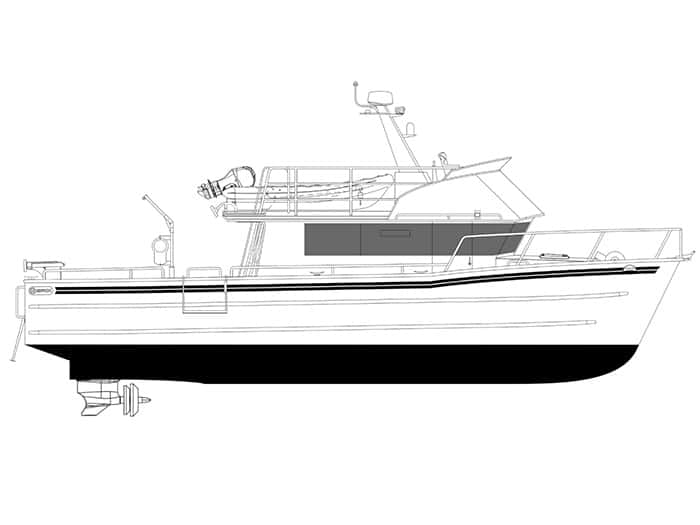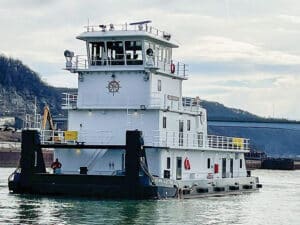
BRIX Marine launches 40-foot cruiser with Volvo IPS
Written by Marine Log Staff
BRIX Marine, Port Angeles, Wash., has announced the development of a new long-range cruiser, the 4014-CTC, a 40-foot catamaran designed for extended coastal travel. The vessel features Volvo’s IPS propulsion system, updated hull geometry, and an integrated electronics suite focused on navigation, communication, and vessel control.
The 4014-CTC is powered by twin Volvo D6-IPS650 engines, each rated at 480 horsepower. The design includes Volvo’s Dynamic Positioning System for station-hold functionality, IPS joystick controls for improved low-speed maneuvering, and block heaters on each engine. The IPS pods are treated with Prop Speed foul-release coating, and the vessel is covered under Volvo’s Marine Leisure Extended Coverage (IPS20), which provides five years or 2,000 hours of protection.
“BRIX Marine is very excited to offer new 4014 CTC RecPro cruiser,” said Charlie Crane, sales and marketing director at BRIX Marine. “This is a proven hull with the Volvos IPS propulsion system makes it a dream boat. We have installed many of the Volvo/IPS systems on our vessels. The liveability aboard is set up for happy owners and guest.”
The hull is based on BRIX Marine’s Classic Tunnel Catamaran design, with modifications to the demi-hull shape, stem angle, and deadrise. These updates are intended to increase efficiency at lower speeds and reduce the energy required to bring the vessel on plane. The hull maintains the same top-end speed while offering a larger cruising range. Paired with the IPS drives, the vessel is expected to reach sprint speeds in excess of 40 knots and a cruising range exceeding 700 nautical miles.
All windows are bonded directly to the superstructure, creating a modern, low-profile appearance while expanding visibility from within the vessel. The interior includes an upgraded companionway design, which provides access to the quarter berth and incorporates a bench seat facing inboard to increase seating capacity in a sofa-like layout.
LED lighting is installed throughout and is digitally controlled. The interior head is built to a high level of finish, and both the head and the bulkhead separating it from the main salon offer customization options, allowing owners to personalize the interior layout and appearance.
The navigation system is centered around the Volvo Glass Cockpit interface. The main helm features two 16-inch multifunction displays, with an additional 16-inch display on the aft deck and a 12-inch display on the flybridge. Integrated electronics include a Garmin VHF 215 radio with hailer, a GHS 11 remote handset at the flybridge, a GPS antenna, 1kW stainless steel CHIRP transducer, and a GMR 18HD+ 4kW radar with an 18-inch dome and a range of up to 36 nautical miles.
The vessel is equipped with a NMEA 2000 network and includes three Garmin GC 200 marine IP cameras monitoring each engine room and the aft deck, as well as a Sionyx night vision camera. A magnetic compass is also mounted behind the helm for redundancy.
The onboard audio system is powered by a Fusion stereo featuring Wi-Fi, Bluetooth, AM/FM, AUX, and USB connectivity. A 500-watt, six-channel amplifier drives three audio zones located throughout the main cabin, aft deck, and flybridge.
The 4014-CTC is currently in the design phase. Technical drawings are complete, and the vessel is available for customer-specific outfitting.




